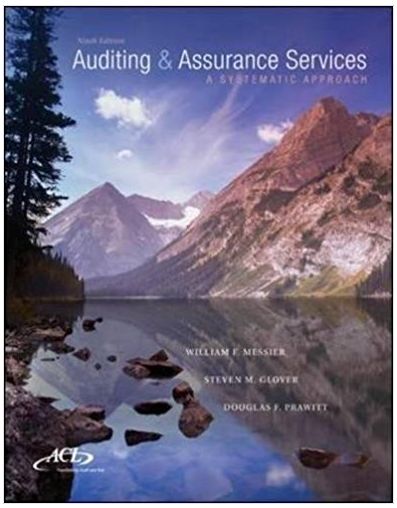Doug Stevens, CPA, is interested in testing the fairness of the ending inventory balance during the audit
Question:
Doug Stevens, CPA, is interested in testing the fairness of the ending inventory balance during the audit of Morris Co. Doug has relatively little experience using statistical sampling methods and, quite frankly, doesn’t like to turn anything over to random chance— especially the selection of items to test. Doug used a judgmental method of selecting items for testing. The method involves testing the inventory- item balances that he deems most risky or most likely to be misstated. Doug identified items to test based on size of balance, findings from prior years, age of inventory, description, and professional judgment. He selected 26 items with a total book value of $ 720,000. In his “sample,” he found a combined $ 80,000 in overstatement errors. The book value of inventory on the entity’s records is $ 1,090,000. Overall materiality for the engagement is $ 500,000. Doug’s policy is to use 50 percent or less of overall materiality as tolerable misstatement for any one account.
Required:
a. What is your opinion of Doug’s method of selecting his “sample”?
b. Evaluate Doug’s results. Does he have sufficient evidence to conclude the balance is fairly stated?
Ending InventoryThe ending inventory is the amount of inventory that a business is required to present on its balance sheet. It can be calculated using the ending inventory formula Ending Inventory Formula =...
Step by Step Answer:

Auditing and Assurance Services A Systematic Approach
ISBN: 978-1259162343
9th edition
Authors: William Messier, Steven Glover, Douglas Prawitt





